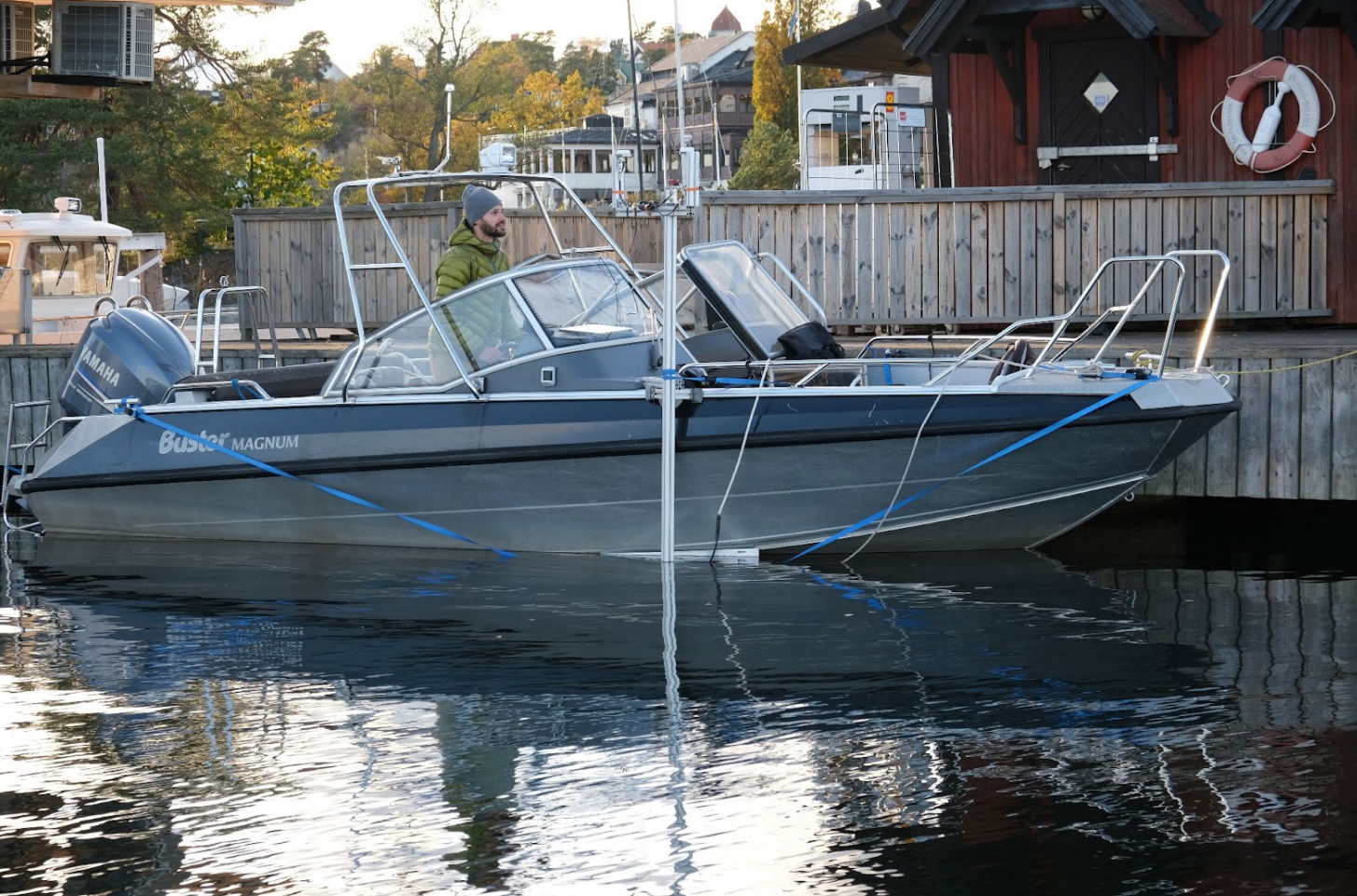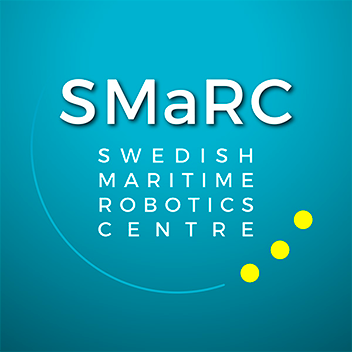Breakthrough on LoLo research:
“We are now able to monitor and talk to LoLo while she is underwater”
Interview with Aldo Teran Espinoza
In late October the SMaRC research team spent time in Saltsjöbaden to carry out test sessions with AUV LoLo, aiming to gather data for further research. The test session was a success and important progress was made. For the first time, the team was able to monitor and talk to LoLo while she was underwater, which in turn opened up the opportunity to go for longer and deeper missions. One of the researchers at the site was Aldo Teran Espinoza.
Aldo, tell us more?
We made huge progress! This was the first time we tried the new USBL mount we built for the tender boat, and it was also the first time that the Scientist computer on board LoLo was aware of these measurements. We carried out around 10 different experiments with LoLo diving at a depth of 5 meters. Thanks to the USBL, we were always aware of the position of LoLo. Right now, I’m using the data we gathered to verify that my algorithms work as they did in our simulated environment.
Why is this progress so important?
This progress is very important. Not only for my research in autonomous underwater docking, which will greatly expand the capabilities of AUVs overall but also for all of us in the LoLo team, since we are now able to monitor and talk to LoLo while she is underwater, encouraging us to go for longer and deeper missions.
Tell us more about your research?
I’m working on an algorithm that will allow LoLo to automatically track the position of a moving docking station using only acoustic measurements. In the autonomous underwater vehicle (AUV) world we call this the “homing” maneuver. It is also known as a rendezvous. In this test session, we captured position data of LoLo while she was navigating underwater using a pair of acoustic devices: one firmly mounted on our boat, the USBL transceiver, and the other mounted on LoLo, the USBL (Ultra-short baseline) transponder. To calculate this position, the sensors first find the relative distance between them by “talking” to each other and measuring the time it takes to send an acoustic message back and forth. Given that they know the speed of sound through the water, they can easily calculate the range between them. The bearing, i.e. the angle of the range vector, is computed by the device on the boat using a technique called “beam-forming”: the USBL transceiver has an array of hydrophones, which are merely underwater microphones, that receive the acoustic message at a slightly different time, allowing it to determine the bearing to the source of the message. USBL position measurements can be quite noisy because the hydrophones can be sensitive to acoustic echoes induced by the diverse reflective surfaces around the LoLo and the boat, e.g the surface of the water, which is why we need to process those measurements using the algorithms that I’ve been developing.
Other researchers on the team were Clemens Deutsch and Niklas Rolleberg.

